I make creatures. Sometimes I even post them here. Mostly use this blog for reference and saving cool art I find.
Last active 60 minutes ago
Don't wanna be here? Send us removal request.
Text

The image of the sea can take on many forms, and its moods are ever changing. From many harrowing tales, you know that it can be a thing of rage and chaos, tempests blowing and waves crashing upon rocks and ship. Yet, some days it can be peaceful and calm, the undulations of the water like gentle rocking that can lull one to sleep. Just the sound of the ocean breeze and the distant calls of seabirds. Add warm rays of sunlight, and you got a very relaxing time! However, such tranquility does not last long, as inevitably the weather will go sour and the winds and waves will grow nasty. Or in other cases, some local marine life may decide that they have had enough of this boring ol "peace" and "quiet," and mix up the scene by blowing things up.
If there is ever chaos, carnage and lots of loud booms coming from the ocean, it could be a violent storm, or perhaps a pod of explosive troublemakers passing through. The species I am talking about is known as the Bombardier Whale, which should give you a clue about their whole deal. Well, a bit of the lie there, actually. Forgive me for being me, but I have to point out the wrongness in their name, because Bombardier Whales are not whales! They're dolphins! And I already know people are like "what's the difference?" as if I am being unreasonable here, but there is a difference! I mean, just look at them! Isn't it obvious?! Oh I would gladly go into it, but I already know Eucella is readying her quill at this hint of a rambling tangent, so I shall abstain for now. Lets just say, the Bombardier Whale is actually a dolphin, pretend its a fun fact and move on.
So a Bombardier Whale has your basic dolphin anatomy, where if you picture the typical dolphin in your mind, you are almost there in imagining a Bombardier. The major changes to them is, first, their humped backs. A big mound of blubber and muscle that sits upon their back, from which a comically small dorsal fin sticks out from. Then there is the "armor plating," which is actually hardened hide and fat. These dense chunks may not be armor that can deflect a blade, but it can eat a whole lot of damage while keeping all the vital stuff underneath free of harm. These plates are found on their head, running down their backs and on their bellies as well. Once you got those two features added to your mental dolphin, all you got to do is paint it blue, add a ludicrous amount of scars to it and TA-DA! A Bombardier Whale!
With a body so packed with muscle and blubber, combined with toughened hide, you imagine this species is quite the brawler! All this mass is surely for vicious battles and taking foes head on! Of course, you would only be saying that if you didn't know their name, because in truth, all this is to help them survive their own signature weaponry! While other cetaceans may use more basic forms of hunting prey, like filter feeding or simply chasing them down, the Bombardier Whale instead relies on something a lot more flashy and explosive! In their head, the Bombardier Whale creates a potent chemical that is stored in sacs connected to their blow hole. This secretion is currently stable in this form, with no worries of any accidents! That is because it requires a couple more components to reach its deadly potential! You see, the lining of the tubes that connect these sacs to their blowholes have a special sticky mucus that acts as a catalyst, which begins the process of making its chemical weapon more volatile. When needed, muscles squeeze these glands and force the chemical through the tubing to start the catalyzation, causing this load of fluid to become more unstable and gaseous with each passing moment. While this is happening, the mixture is pushed into their specially designed blow hole, which releases air in sync with this changing fluid to trap pockets of its volatile gas in bubbles. With a final effort, the armed bubble is released from its blow hole and floats out into the ocean. In this brief state, you can see an orangish gas swirling within the bubble, the only warning you get before it pops. And when it does, a lot of other things go POP!
With this system, the Bombardier Whale is able to essentially make bomb bubbles, which it uses for hunting and self defense. Their control over how much gas is released and how many bubbles are formed is insanely good, allowing them to fit their weapon to the current situation. When it comes to getting food, the Bombardier Whale works in pods to drive schools of fish into a single condensed ball. They do so using their bodies and brief sprays of lightly armed bubbles that more so pop and sizzle than do any real damage. Once the fish are trapped in a small area, a few members of the pod will swim below and release big bomb bubbles to float up into the school and detonate. The resulting explosion turns the prey into chunks and chum, and the whole pod rushes in to feed. While this may seem like overkill for catching a few small fry, using these explosives does have its advantages. For one, having prey getting blasted into pieces means they can go after bigger fish than other dolphins could normally handle. No worry about it fitting down the ol gullet, as it will be blown into perfect morsels for swallowing! The other advantage is that this hunting method keeps a lot of freeloaders and thieves away from their reward. Normally, lots of sea birds and fish try to swoop in to steal what food they can from the hunter's hard work, but when you add in the possibility of getting blown to bits from an ill-timed dive, then many species keep their distance!
This weapon is helpful in both pods and when on your own, as single Bombardier Whales can still get a meal without all that "teamwork" stuff. They simply swim below their prey and release bubbles to either catch it in an explosion, or use distracting popping sprays to force them into a specific direction where the dolphin can lunge forth and grab them. This species can even time their explosions by popping the bubbles prematurely using their calls. One member can make one real big stable bubble that slowly floats upward, while another waits on the side for it to reach the right level. Once the bubble is in the perfect spot, they release a sonar click that disrupts it and pops it, causing gas to meet water and BOOM!
No doubt this same tool is great for keeping away predators, as it is very powerful and dangerous! So dangerous, that Bombardier Whales have developed this hide padding and dense layers of blubber to help absorb the blow of any explosion that goes off too close. Their huge hump is believed to be a shock absorber, taking the punishment of failed bubbles and attacks to keep the organs and vital bits safe. In fact, you can often see the results of "bad days" painted all over their bodies, as they tend to be coated in scars. Some are from bomb bubbles, others are from predators and fights with other Bombardiers. It turns out, this species can be a bit testy and vicious, confident in their weaponry. They pick a lot of fights, and their tough hide and blubber allows them to swim away with only shallow wounds. Many predators and attackers break off combat pretty quick once the explosive bubbles show up, as not many creatures are willing to have a hole blown in them!
While this species is absolutely fascinating with their unique weaponry and method of hunting, there is certainly some issues that can arise with them hanging around coastal villages. Fishermen, sailors and general residents are not fans of these dolphins, due to the destructive nature of their bubbles and the sheer noise they make. Plenty of fishing boats have had their hulls obliterated by a hunting pod who have released their bubbles right below them. Nets and entire catches can be ruined when these dolphins see an opportunity to feed, turning a valuable haul into a bloody spray of sea water and fish chunks. Some are accidental, others intentional. Cetaceans are smart creatures, and the Bombardier Whale is no exception! They know how to coordinate attacks, adapt to various prey and counter predator tactics. They also know the sign of a free meal and the image of a competitor. Fishing vessels can steal their food, and they don't like it, so they will totally target them for destruction. And then people with harpoons come out to get rid of these detonating dolphins, which they don't like even more! What can result is an entire pod of Bombardier Whales who are very anti-boat, and they will make it a nightmare for any vessel that crosses their path. They will swim circles around the ship, diving below to deposit explosive bubbles underneath until the hull is breached. Needless to say, plenty of boats are lost to these antics, and thus a hatred for these dolphins develop. Hunting and killing of this species has dropped their populations in coastal waters where villages and ports are a plenty. Thankfully, pods further out in the sea or in uninhabited waters still exist in peace, and ensure this species still has healthy numbers. Just be wary when you discover an untouched coastline and pristine waters filled with fish, because there is a high chance someone else has already laid claim to these waters.
In some regions, Bombardier Whales can be hunted for food, as their meat and blubber is considered a delicacy. The reason why it is a rare treat is the same reason other regions don't bother hunting them in the first place: one wrong harpoon shot or cut with the knife can cause the entire deck to blow sky high. Yes, their explosive fluid is stable when in storage, but all it needs is to touch mucus and saltwater to become volatile. When they are dead, muscles loosen and sacs can leak. A wet carcass hauled onto a ship can be a ticking time bomb depending on how their fluid stores act and how fate rolls their dice. These dangerous pieces can be carved out and thrown away to render the rest of the meat safe, but it takes a skilled and precise butcher to do so. One wrong cut, and you could be reduced to jelly. In some places, when a Bombardier Whale is killed, they saw off the head as fast as possible and just chuck the whole thing into the sea. All this is also the reason why you never approach a beached one or a dead one washed up on shore. One second you are investigating a seemingly harmless heap of blubber, the next you are in the afterlife wondering what that noise was.
Oh, and final note: Folks find dolphins and small porpoises fun to play with and swim around with (I wouldn't be part of that, what with me being a plant that hates salt water). There are plenty of tourist packages and promises of "swimming with dolphins" that people eat up. Folks find certain cetaceans playful, cute and fun! This species is not one of those. Do not get in the water with them. In fact, don't even be ON the water with them. You have been warned.
Chlora Myron
Dryad Natural Historian
-------------------------------------------
"Bombardier Whale"
How about a bubble bomb blowing dolphin? Surely that can't go wrong!
25 notes
·
View notes
Text
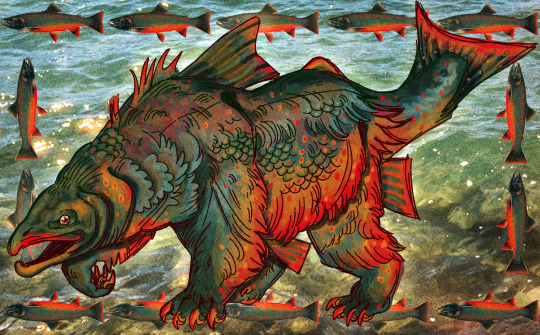
dolly varden bear fish
𓆝 𓆟 𓆞 𓆟 𓆝
this thang is full of meat!!!! :P
10K notes
·
View notes
Text
By using antibodies from a human donor with a self-induced hyper-immunity to snake venom, scientists have developed the most broadly effective antivenom to date, which is protective against the likes of the black mamba, king cobra, and tiger snakes in mouse trials. Described in the journal Cell, the antivenom combines protective antibodies and a small molecule inhibitor and opens a path toward a universal antiserum.
Continue Reading.
26K notes
·
View notes
Text
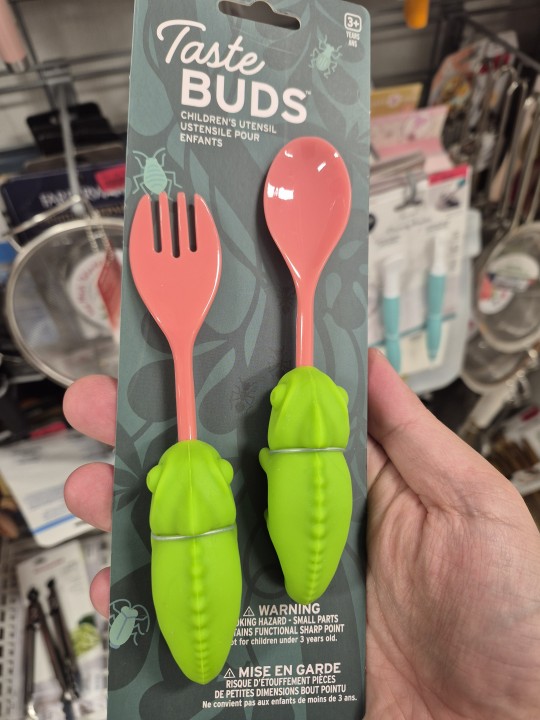

Buying these as mini digging tools for my terrarium jars
1K notes
·
View notes
Text
Round 3 - Reptilia - Bucerotiformes
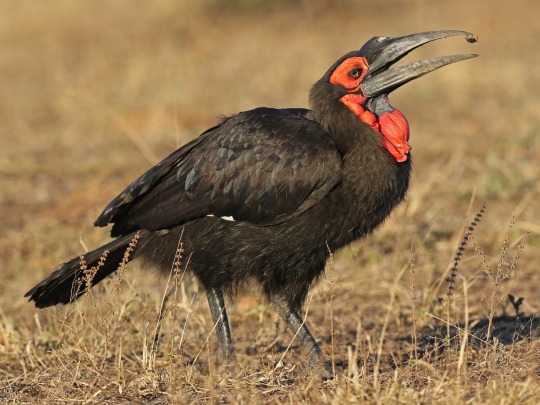
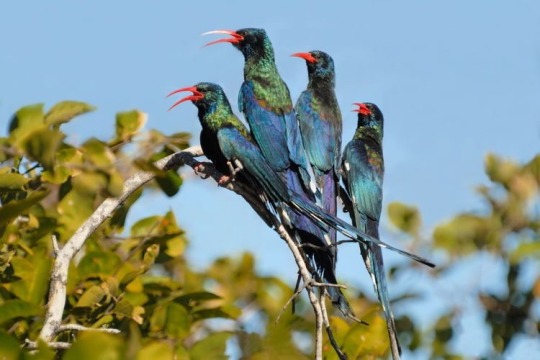
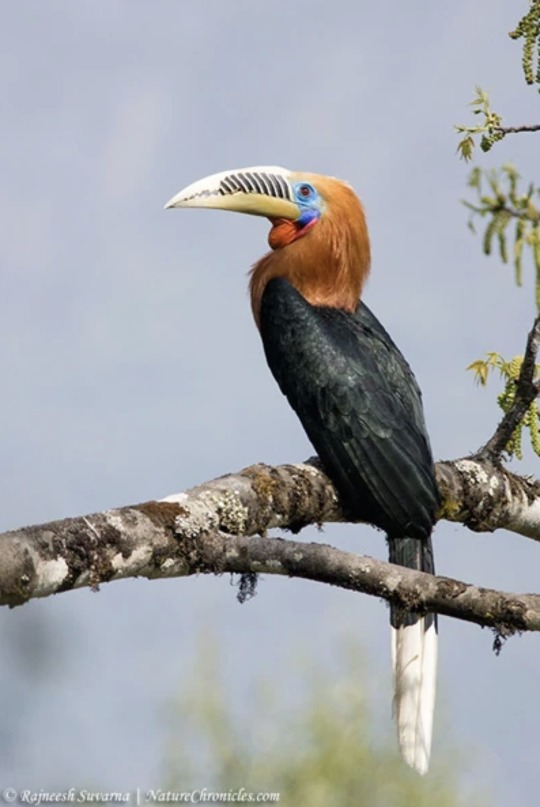
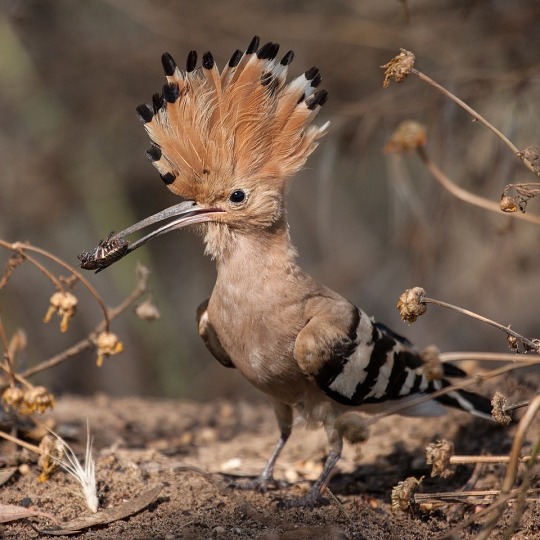
(Sources - 1, 2, 3, 4)
Our next order of birds are the Bucerotiformes. This order contains the families Phoeniculidae (“wood hoopoes” and “scimitarbills”), Upupidae (“hoopoes”), Bucorvidae (“ground hornbills”), and Bucerotidae (“hornbills”).
Bucerotiformes are most known for their long, downcurved bills. Some hornbills have a hollow casque, while hoopoes have a feather crest. They are diurnal. Wood hoopoes and hoopoes hop across the ground rather than walking. They probe the ground with their long bills to feel for larvae and other fossorial insects. Hornbills cannot swallow food caught at the tip of the beak as their tongues are too short to manipulate it, so they toss it back to the throat with a jerk of the head. Bucerotiformes eat arthropods, small reptiles, frogs, and plant matter such as seeds and berries. Ground hornbills may also eat snakes, other birds, and even tortoises. They are distributed throughout Africa, Eurasia, and Melanesia.
Bucerotiformes are mainly monogamous, at least for one breeding season. Some engage in cooperative breeding, while others are territorial. Sexual dimorphism varies between species. They nest in a hole in a tree, wall, or cliff with a narrow entrance. Only the female incubates the eggs, with the male bringing her food. Some hornbill females will seal themselves into the nest cavity with a wall made of mud, droppings, and fruit pulp, leaving one narrow slot just big enough for the male to transfer food to the mother and eventually the chicks. This protects the nest from rivals and predators, and the mother will break down the wall once the chicks are too large to fit in the nest.
Bucerotiformes arose in the Eocene, with the groups splitting around the Early to Middle Miocene.

Propaganda under the cut:
The Green Wood Hoopoe (Phoeniculus purpureus) (image 2) is a cooperative breeder, living in flocks of up to a dozen birds led by one breeding pair. After the chicks hatch, the mother and nestlings are fed by the rest of the group, even after they have fledged and left the nest hole. The whole group will fearlessly defend the nestlings against intruders.
The Abyssinian Scimitarbill (Rhinopomastus minor) has been observed to nest in abandoned beehives, even though it does not consume honey or other bee products.
Hoopoes are territorial, and fights between rival males (and sometimes females) can be brutal. The birds will try to stab rivals with their bills, and individuals are occasionally blinded in fights.
Hoopoes have well-developed anti-predator defences in the nest. The uropygial gland of the incubating and brooding female is quickly modified to produce a foul-smelling liquid, and the glands of nestlings do so as well. These secretions are rubbed into their plumage. The secretion, which smells like rotting meat, is thought to help deter predators, as well as deter parasites and possibly act as an antibacterial agent. The secretions stop soon before the young leave the nest.
The diet of the Eurasian Hoopoe (Upupa epops) (image 4) includes many species considered by humans to be pests, such as the pupae of the Pine Processionary (Thaumetopoea pityocampa), a damaging forest pest. Because of this, the Eurasian Hoopoe is protected by law in many countries.
A hoopoe was a leader of the birds in the Persian book of poems The Conference of the Birds ("Mantiq al-Tayr" by Attar). When the birds seek a king, the hoopoe points out that the mythological Simurgh should be the king. The hoopoe is also the king of the birds in the Ancient Greek comedy The Birds by Aristophanes.
Hornbills are the only birds in which the first and second neck vertebrae (the atlas and axis respectively) are fused together. This probably provides a more stable platform for carrying the large bill.
The casque of the Helmeted Hornbill (Rhinoplax vigil) is not hollow, as in other hornbills, but is filled with “hornbill ivory”. The Helmeted Hornbill uses its casque as a battering ram in dramatic aerial jousts. Unfortunately this has made the Helmeted Hornbill a target for poaching as a source of ivory, and the bird is now critically endangered. There are fewer than 100 Helmeted Hornbills remaining in Thai forests.
At least 546 hornbill parts, mostly casques of Helmeted Hornbills, have been posted for sale on Thai Facebook in the past five years. According to the conservation group TRAFFIC, 2,170 hornbill casques were confiscated in just three years in China and Indonesia alone. Traders will pay villagers 5,000-6,000 baht (US$165–200) for a hornbill head. Prices double or triple in cities and increase exponentially when sold overseas.
It is a belief among the Punan Bah that a large Helmeted Hornbill guards the river between life and death, and judges the worth of those who pass.
The Iban people of Borneo regard the Rhinoceros Hornbill (Buceros bicornis) (see gif above), or Kenyalang, as the king of the worldly birds, who acts as the intermediary between man and God.
The critically endangered Walden's Hornbill (Rhabdotorrhinus waldeni) is another one of the most threatened hornbills. It is presumed extinct on Guimaras and now survives only on Negros and Panay. The total population has been estimated at less than 160. Walden's Hornbills reproduce very slowly and thus are unable to survive high hunting pressures coupled with heavy logging of the rainforests. Despite already limited forest cover, deforestation still continues thanks to both legal and illegal logging, conversion into farmland, mining, and road development. Another huge threat is hunting and capture for the illegal wildlife trade. According to the Philippine Initiative for Environmental Conservation (Philincon), up to 50% of all nests in Central Panay Mountain Range were affected by poachers who would either climb up or cut down the nesting trees to poach the nestlings and the mother. Due to this high poaching rate, Philincon has devised a nest guarding program where they pay locals US$20 a month to guard hornbill nests and offer an incentive of US$11 for each successful fledged bird.
Some species of hornbills in Africa have a mutualistic relationship with Dwarf Mongooses (genus Helogale), foraging together and warning each other of nearby predators. One viral video even shows a young Dwarf Mongoose inviting a hornbill to play.
Forest-dwelling species of hornbills are important seed dispersers. The Malabar Pied Hornbill (Anthracoceros coronatus) even has a preference for the fruits of the Strychnine Tree (Strychnos nux-vomica), which contain the potent poison strychnine, making it hard for other animals to disperse the seeds.
The largest Bucerotiform is the Southern Ground Hornbill (Bucorvus leadbeateri) (image 1), at 90 - 129 cm (2 ft 11 in - 4 ft 3 in) long.
Ground hornbills are some of the longest-lived birds, living 50-60 years in the wild and over 70 in human care.
71 notes
·
View notes
Text
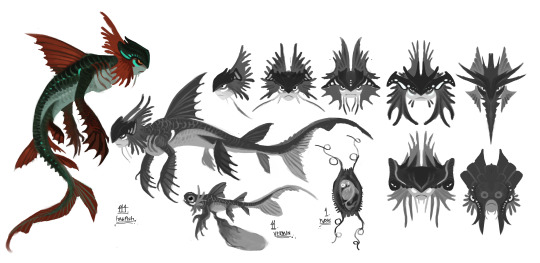
'' Hagfish, their miserable life cycle and their distinct, unusual head ornamentation. Us dragon hunters cant set sail too close to their territories without our ships getting assaulted by a bunch of them, they seem to be quite defensive of their nesting grounds and food supplies. We cant understand them despite our efforts, with the only sounds coming from their mouths being clicking and grunts. Our conflicts persist and persist as we try to settle onto newer lands... and stumble upon more ''Hagfish nests'' across the buoy kelp fields, sometimes oozing with purses, places like these are infertile, lacking a whole lot of edible fish. Hagfish seem to endorse modifying their skulls and other body parts, both for utility and cosmetics, perhaps trying to get a mate or show hierarchy? we'll never know... we know a few things about them though. Young Vermin start out selecting bits and pieces of bone, flat shells, and even plates of coral, only to then slowly incorporate them into their skulls and bodies... giving them an extra set of defense as velvet grows ontop of the newly acquired structures. This leads to many of them growing out with such diversity, the ones with the more wider ''cephalic'' shields seem to protect the pod using their very own skulls as a living piece of armor; whilst more bill-fish like Hagfish use their ornaments as slashing, or for worse, impaling. One must wonder how they deal with marine dragons. ''
443 notes
·
View notes
Photo
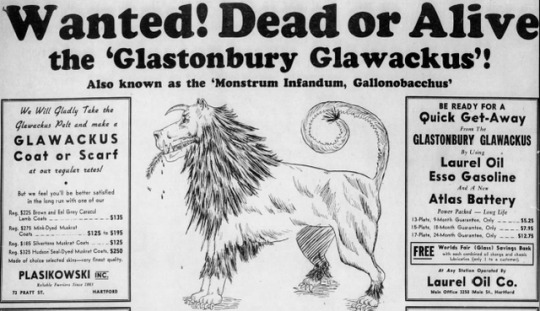
Cryptid of the Day: Glawackus
Description: A hybrid of a bear, a panther and a hyena, it is also known as the Northern Devil Cat, and is known for its horrifying screech. According to legend, the animal is blind, and can only use its sense of smell to find its prey. The creature can also wipe people’s memories if you stare at it in the eyes.
144 notes
·
View notes
Photo

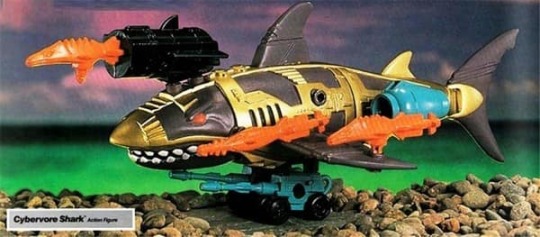
“Centurions - Power Xtreme!” had several unused and unreleased cyber-animal creatures, that only exist as prototypes of a cyborg shark and a cyborg panther. As animation requires lead time, they ended up in the show anyway despite the toys not being released.

154 notes
·
View notes
Photo

The Panther is a sedentary predator from Idlewood that lies around emitting a fantastic smell, which attracts animals into its cave. The Panther then picks off these curious creatures at its leisure and consumes them. But as much as the Panther eats, it’s rare that anything ever comes out of it– all of the magical and non-magical stuff it has devoured over the centuries has compressed into a roiling pit of magical energy inside its belly. The fiery glow of this mass shines through the Panther’s spots and orifices, giving it a rather unique appearance.
181 notes
·
View notes
Text
Happy Dracones Monday! Water Panther

The Water Panther is from the Great Lakes of North America - I am not going to call this Mishipeshu, as that is a specific spirit and not an animal - I want to respectully mention Native American folklore in my project (as I don't want North America to only have dragons invented by westerners) but I don't want to equate spirits and important figures to 'cryptids' - I will either find a respectful way to include water panthers in the project or I will remove them - for now I'm just posting this picture on my blog. I based the face on a lynx, and gave him a copper coloured tail.
Here are links to Native-Languages.org website on the Water Panther and the 'True Tiger', for people wanting to learn more. Native Languages is a great resource for learning about folklore, languages and traditions in North America!
60 notes
·
View notes
Text

quick sketch of owlbear and displacer beast redesigns, coz i think just a bear with an owl's head and just a panther with six legs and tentacles are boring
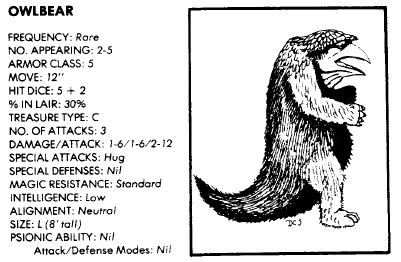
owlbear design is somewhat inspired by it's first appearance
327 notes
·
View notes
Photo

The Swan Valley Monster is a lake monster found in Swan Valley Idaho. The Swan Valley Monster is described as an ugly creature with an elephant’s trunk, fins on the side of its head, a red forked tongue, whiskers, a snake-like head, rainbow scales, black spines, twelve small legs, and a gray crocodile-like tail it is about twenty feet long and also is said to spew poison and smell horrible. The Swan Valley Monster was first sighted on August 22nd 1868 where two men saw it and smelt it and it came up on land out of the lake and it spewed poison and everything its poison touched died it then went back into the lake.
235 notes
·
View notes








